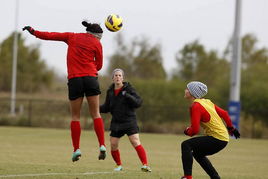Title: The Differences Between Chinese and American Sports Culture
Sports play an essential role in both Chinese and American cultures, shaping values, fostering community, and promoting physical wellbeing. However, there are distinct differences between the two countries' approaches to sports. Let's explore the unique characteristics of Chinese and American sports culture.
In China, sports are often viewed through a lens of professionalism and elite competition. The emphasis is placed on identifying and nurturing young talents for professional sports, with a strong focus on reaching high levels of performance in specific disciplines such as gymnastics, table tennis, and diving. This approach is closely tied to the statebacked sports system, which actively seeks Olympic success and national pride through elite athletes' achievements.
Conversely, the American sports culture is distinguished by its emphasis on participation, enjoyment, and the development of wellrounded individuals. Youth sports play a significant role in American communities, with a focus on inclusivity and providing opportunities for children to develop social skills, teamwork, and physical fitness regardless of their skill level. Additionally, the United States' professional sports leagues, such as the NFL, NBA, MLB, and NHL, are globally renowned for their commercial success and entertainment value.
In China, there is a strong tradition of communitybased physical activities, such as tai chi in public parks and group exercises. However, the spectatorship of professional sports is heavily focused on major events and national teams, particularly during major international competitions like the Olympics and World Championships. These events often evoke a powerful sense of national pride and unity among the Chinese population.
In the United States, sports serve as a catalyst for community cohesion and identity. The culture of tailgating, where fans gather before sporting events to socialize and enjoy food and drinks, is a quintessential American sports tradition. Furthermore, high school and collegiate sports, particularly football and basketball, hold significant cultural importance in American communities, with loyal fanbases and alumni support.

China has increasingly utilized sports as a tool for diplomacy and soft power. The country has invested heavily in hosting international sporting events, building stateoftheart facilities, and attracting highprofile athletes and competitions. Additionally, China's growing influence in global sports governance and investment in overseas sports organizations reflect its ambition to project soft power through sports.
The United States has historically exerted significant cultural and economic influence on a global scale through its professional sports leagues and iconic sporting events like the Super Bowl and the NBA Finals. American athletes, teams, and leagues hold a prominent position in global sports, contributing to the country's soft power and cultural influence worldwide.
While both Chinese and American sports cultures are deeply ingrained in their respective societies, they exhibit distinct characteristics driven by historical, cultural, and sociopolitical factors. Understanding these differences fosters crosscultural appreciation and provides valuable insights into the diverse ways in which sports contribute to national identity, community cohesion, and international relations.

2004新澳精准资料免费提供,最新成语解释落实_The51.94....

2024澳门新资料大全免费直播,最新成语解释落实_HD36.60....

亚洲欧美日本私人家庭影院:真实性答案曝光落实在现代生活中,随着...

香港的转型与未来展望:融合传统与现代的独特路径引言香港,这个...

欧洲杯冠军奖励欧洲杯是欧洲足球的最高荣誉之一,每四年举办一次。对于获...